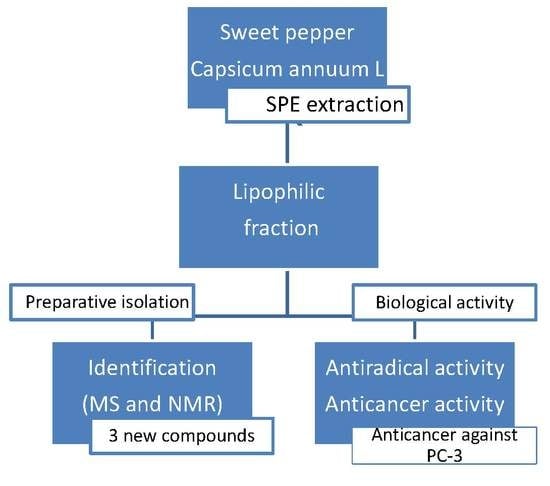Anticancer Potential and Capsianosides Identification in Lipophilic Fraction of Sweet Pepper (Capsicum annuum L.)
Abstract
Share and Cite
Chilczuk, B.; Marciniak, B.; Stochmal, A.; Pecio, Ł.; Kontek, R.; Jackowska, I.; Materska, M. Anticancer Potential and Capsianosides Identification in Lipophilic Fraction of Sweet Pepper (Capsicum annuum L.). Molecules 2020, 25, 3097. https://doi.org/10.3390/molecules25133097
Chilczuk B, Marciniak B, Stochmal A, Pecio Ł, Kontek R, Jackowska I, Materska M. Anticancer Potential and Capsianosides Identification in Lipophilic Fraction of Sweet Pepper (Capsicum annuum L.). Molecules. 2020; 25(13):3097. https://doi.org/10.3390/molecules25133097
Chicago/Turabian StyleChilczuk, Barbara, Beata Marciniak, Anna Stochmal, Łukasz Pecio, Renata Kontek, Izabella Jackowska, and Małgorzata Materska. 2020. "Anticancer Potential and Capsianosides Identification in Lipophilic Fraction of Sweet Pepper (Capsicum annuum L.)" Molecules 25, no. 13: 3097. https://doi.org/10.3390/molecules25133097
APA StyleChilczuk, B., Marciniak, B., Stochmal, A., Pecio, Ł., Kontek, R., Jackowska, I., & Materska, M. (2020). Anticancer Potential and Capsianosides Identification in Lipophilic Fraction of Sweet Pepper (Capsicum annuum L.). Molecules, 25(13), 3097. https://doi.org/10.3390/molecules25133097







